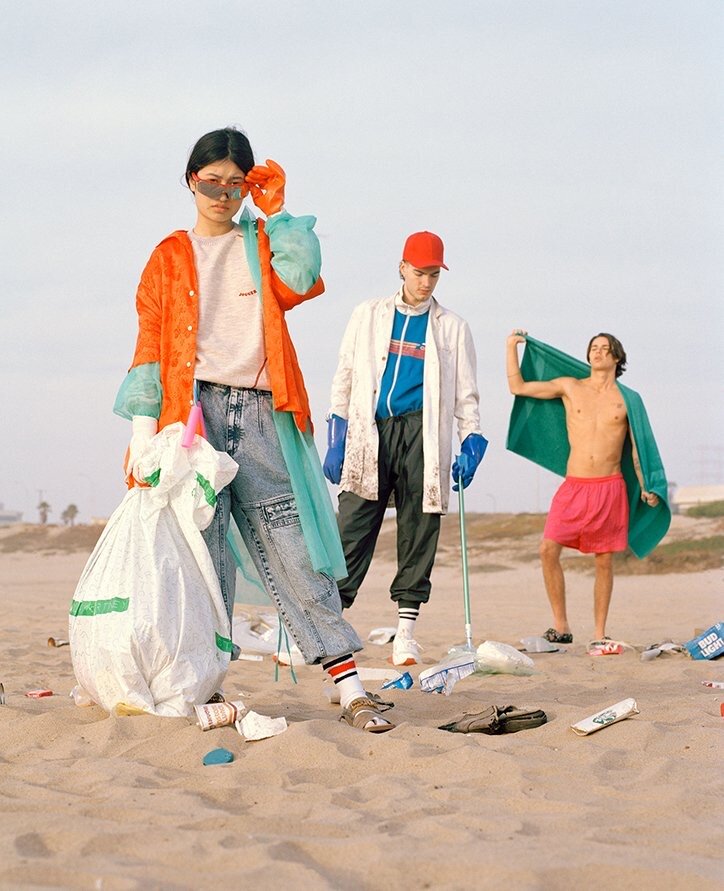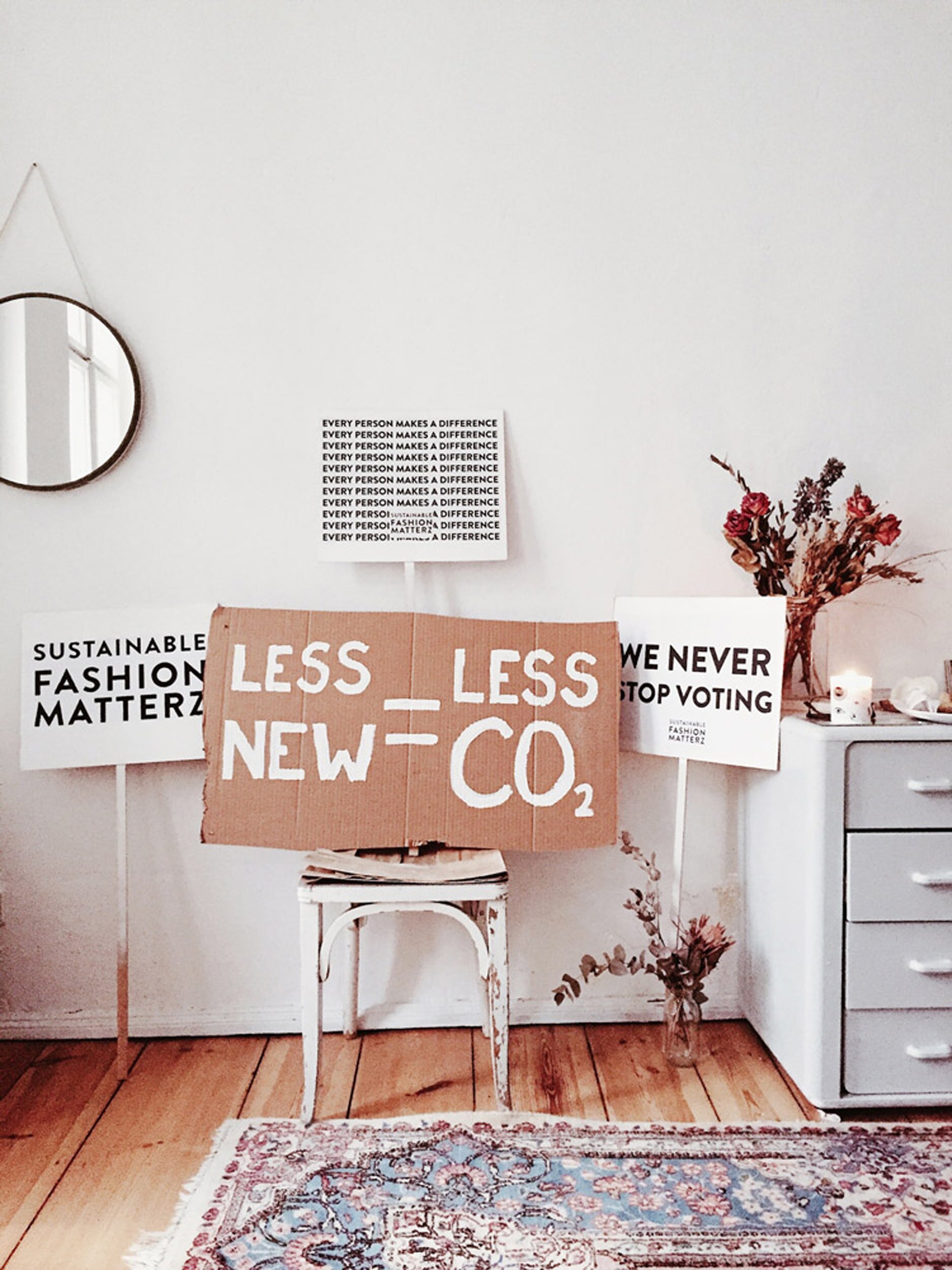
Is Education The Key To A More Sustainable Future For Fashion?
By Dr Alana M James
The term sustainable fashion has often been described as an oxymoron – two conflicting forces fighting against each other, pulling in opposite directions. Fashion, in its very nature is all about the new and contemporary, a constant evolution of change, season after season presenting the latest, fresh ideas. This wheel of constant change has been intensified further with the development of the fast fashion business model, which aims to bring catwalk-inspired fashion to the mass market, as quickly and as cheaply as possible. This model is based on speed of delivery to market and has increased the amount of clothing available to consumers, moving away from the traditional two seasons per year to a constant drip feed of up to 16 collections per year.
In contrast, the principles of sustainability are built on the values of longevity, alongside the reduction of impact and effective resource use, prioritising preservation of the environment for future generations. Opposing the speed of production, sustainable fashion favours the slow and considered design and make process, with a consequential increased value relationship between the owner and the product.
The stark contrast between the definitions of fashion and sustainability highlights the need for change, with a shift away from this unsustainable model slowly being recognised in an industry context. However, to change the way fashion companies do business relies heavily on industry professionals having the knowledge and skillset to action this change. The immediate challenge in this scenario is the education of professionals who currently work within the industry. This is also having an effect on the skills and knowledge needed from fashion graduates and therefore fashion education. The consideration of sustainability in university degree programmes requires educators to address the discipline’s inseparable relationship with constant change, opting for slower, more considered ways of working.
“Consequently, most mainstream fashion programmes support unsustainability rather than considering how fashion can be made, produced and consumed without causing harm to people and the planet.”
What role can fashion education play?
Photo by RF._.studio from Pexels
Just as in industry, there are opposing forces in the teaching of sustainability in a fashion context at a higher education level. The traditional methods of teaching support the take, make, dispose linear model of fashion, with students encouraged to keep up with the latest trends and reflect a constant change of aesthetic in their designs. The approach to teaching fashion has changed very little in the past few decades and remains rooted in corporate globalisation and the traditional production-to-consumption model. Consequently, most mainstream fashion programmes support unsustainability rather than considering how fashion can be made, produced and consumed without causing harm to people and the planet.
Methods of teaching sustainability also need to be questioned as it has become apparent that traditional methods do not effectively embed values of sustainability within creative subjects. Words alone (i.e. lectures) are seen to not be enough to fully understand the complexities of sustainability in the correct context, but that learning by seeing real-life examples is a much more effective method to engage students. Experiential learning can often lead to more meaningful understanding and often appeals more to creative students who appreciate a tacit sense of learning through their hands-on craft.
To reflect the skills needed in industry however, fashion students also need to understand sustainability from a more holistic perspective, requiring them to explore outside the boundaries of their subject area. The understanding of sustainability from a social, environmental and economic perspective is key. However, there is a reluctance to engage in content outside of their own discipline making this bigger-picture knowledge almost impossible.
“Terminology presents further potential barriers, with sustainability now encompassing so many factors, it has almost lost meaning all together.“
Challenges
Sustainability in the fashion industry is changing, however integrating these principles remains non-mandatory and is often seen as an inconvenient additional factor which needs to be considered during the design process. The separation of sustainable products when shopping can also give off the wrong message. Highlighting sustainability through selected product ranges can have both a positive and negative effect. However, just as with the fashion market, there has been a similar approach identified in the teaching of sustainability, with additional modules or projects often being an add-on rather than the core focus.
Terminology presents further potential barriers, with sustainability now encompassing so many factors, it has almost lost meaning all together. Often presented as an umbrella term and broken down further into sub-categories (e.g. environmental and social sustainability), the complexities of what this concept actually means needs to be carefully deciphered. Interchangeable terminology can cause further complications with terms such as green, eco, ethical and responsible also being used too often mean the same thing. This lack of clarity only poses further complications and mystifies sustainability, with many simply switching-off from engaging with these values on any level.
“The industry needs to begin to lead by example and demystify sustainability within a fashion context.”
Education as a tool for change
The perception of sustainability within a fashion context needs to be approached differently, with knowledge and skills becoming part of the designer’s toolkit, embedding responsible values throughout their creative practice. In education, teaching should give credence to this area of knowledge just as focus would be paid to discipline specific skills such as illustration, pattern cutting and garment construction. This integrated approach would avoid issues of segregation and ensure that fashion students acknowledge principles of responsibility at every stage of their process.
The industry needs to begin to lead by example and demystify sustainability within a fashion context. Not only would this allow for companies to be easily compared, but could also direct the skills, knowledge and experience required of individuals leaving university. This would ensure that the graduate qualities required by industry are fulfilled and that students are work ready, following the completion of their education. Many institutions, both from a theoretical and creative perspective, are looking to the Sustainable Development Goals (SDG’s) as a guide in teaching student projects. Whilst very relevant to fashion, these goals are not discipline specific and could be related to a number of different sectors, this does however allow for creative interpretation and innovation from a student perspective.
The success of integrating sustainable principles within fashion education requires commitment and buy-in from all involved, each with their distinctive role to play in the transition to future responsibility. Collectively, these parties have the ability to shape and future proof the fashion industry, ensuring that sustainability is embedded as a key skill in creative design disciplines.
This article is part of a series written by Alana with a new sustainability issue discussed each month.
Next up: The Environmental Impact of Plastic Garment Hangers
Related Articles.
Fashion’s Impact on our Oceans.
How does clothing pollute the Oceans? And what are some small changes we can make to have a positive impact as consumers, fashion industry professionals and brands.
Stories | By Emma Golley | 06.08.20
The Power Of The Consumer.
How we as consumers can make small changes with powerful & influential consequences.
Sustainability | By Dr. Alana M James | 10.15.20
Fashion’s Unsustainable Behaviour.
Dr Alana M James, a Senior Lecturer in Fashion at Northumbria University, provides an insight into the Fashion Industry’s many dirty habits and gives us an invaluable history lesson on how it got to this point.
Sustainability | By Dr Alana M James | 07.15.20







